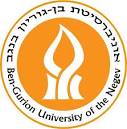 BEER-SHEVA, Israel (Press Release) — A team of researchers from Ben-Gurion University of the Negev(BGU), and the United States provided significant evidence that sunscreen ingredient oxybenzone (BP3) causes coral bleaching at sites in Hawaii, Eilat, Israel, and the Caribbean, leading to a ban which passed Thursday in the Hawaii state legislature,
BEER-SHEVA, Israel (Press Release) — A team of researchers from Ben-Gurion University of the Negev(BGU), and the United States provided significant evidence that sunscreen ingredient oxybenzone (BP3) causes coral bleaching at sites in Hawaii, Eilat, Israel, and the Caribbean, leading to a ban which passed Thursday in the Hawaii state legislature,
Under the new legislation, which takes effect in 2021 once signed by Governor Dave Ige, sunscreens containing this chemical will be banned since only a drop of the substance can contribute to coral bleaching. The European Union attempted a similar ban and may now gain traction since the Hawaii bill passed.
The findings, originally published in the Archives of Environmental Contamination and Toxicology, indicate that oxybenzone (also known as BP-3; Benzophenone-3) pollutes coral reefs due to sunscreen-wearing swimmers, municipal sewage discharge and coastal septic systems. BP-3 is used in more than 3,500 personal care products.
“We found that oxybenzone caused gross morphological deformities, DNA damage and endocrine disruption, which causes the coral to close up and die,” explains Prof. Ariel Kushmaro, of the Environmental Biotechnology Lab in BGU’s Avram and Stella Goldstein-Goren Department of Biotechnology Engineering. “We are pleased to see our research will have a measurable impact on saving shrinking coral reef communities under siege from chemicals, waste runoff and climate change.”
As much as 14,000 tons of sunscreen lotion are emitted into coral reef areas annually, much of which contains between one and 10 percent oxybenzone. The authors estimate that this year at least 10 percent of global reefs are at risk of high exposure, based on reef distribution in coastal tourist areas.
According to the study, oxybenzone was observed as low as 62 parts per trillion, the equivalent of a drop of water in six and a half Olympic-sized swimming pools. Oxybenzone in seawater within coral reefs in Hawaii and the U.S. Virgin Islands found concentrations ranging from 800 parts per trillion to 1.4 parts per million – more than 12 times higher than the concentrations necessary to adversely impact coral.
The study found that oxybenzone is a photo-toxicant with adverse impacts exacerbated in light. But even in darkness, planulae were transformed from a motile (mobile) state to a deformed, sessile (immobile) condition and exhibited an increasing rate of coral bleaching in response to increasing oxybenzone concentrations. This is particularly relevant for areas facing mass bleaching events, including Hawaii.
“In Israel, there is widespread use of sunscreens utilizing chemicals from the benzophenone group,” says Prof. Kushmaro. “According to measurements not included in the study, similar concentrations of benzophenone have been found near the coral reefs in Eilat. Since it is likely that these chemicals are being washed off of swimmers’ bodies, it stands to reason that concentrations would be higher in swimming and snorkeling areas, such as the coral reef reserve in Eilat.”
The Israeli researchers included: Prof. Ariel Kushmaro and Dr. Esti Kramarsky-Winter of BGU’s Environmental Biotechnology Lab in the Avram and Stella Goldstein-Goren Department of Biotechnology Engineering, as well as a member of BGU’s Ilse Katz Institute for Nanoscale Science and Technology and National Institute for Biotechnology in the Negev. In addition, a U.S. team of marine scientists participated in the study.
*
Preceding provided by Ben-Gurion University